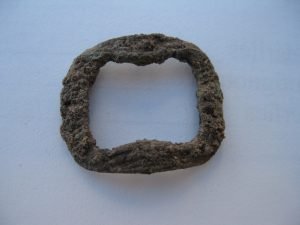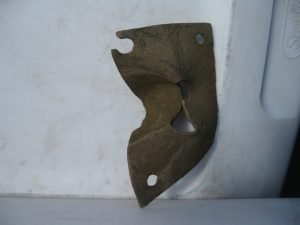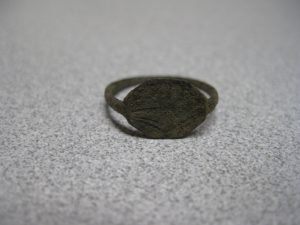The end of August saw the close of another archaeological field season at Colonial Michilimackinac. This was our ninth season of excavation at House E, one of the units of the Southeast Rowhouse. Historic maps and records indicate that this was the house of Charles Desjardins de Rupallay de Gonneville by 1749 (and probably earlier) through at least 1758. By 1765 it was an English trader’s house. Our excavations indicate that it remained civilian housing throughout the fort’s occupation.
Many of this season’s most interesting finds confirmed patterns noticed during the previous eight summers. One of these trends is the presence of a wide variety of ceramics. Particularly notable this year was the discovery of the base of a polychrome creamware teacup. This is a very rare ceramic type at Michilimackinac, as it was not manufactured until 1775. Other recognizable teacup fragments were English white salt-glazed stoneware and Chinese blue and white porcelain. Most of the ceramic sherds we find are too small to identify what type of vessel they come from.
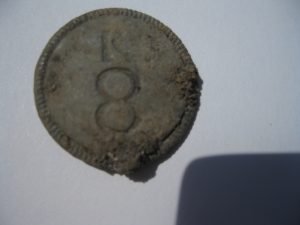 Another pattern that continued was the recovery of numerous European-style personal adornment artifacts. These included parts of six buttons, five cufflinks and one buckle frame, possibly from a knee buckle. One of the buttons was from the Kings 8th regiment and may have been lost during the demolition of the house during the move to Mackinac Island in 1781.
Another pattern that continued was the recovery of numerous European-style personal adornment artifacts. These included parts of six buttons, five cufflinks and one buckle frame, possibly from a knee buckle. One of the buttons was from the Kings 8th regiment and may have been lost during the demolition of the house during the move to Mackinac Island in 1781.
Items used in the fur trade were discovered as well. These included a lead seal, an iron projectile point and some hawkbell fragments. The lead seal would have been attached to a bolt of cloth or other textile to show that it was legally exported. The iron projectile point, or dart, was probably made at Michilimackinac. Hawk bells are small jingle bells that get their name from use in falconry, but were merely decorative on the frontier.
One of the most unusual finds of the summer was part of a triggerguard from a French trade gun. This was only the second gun part found in this house.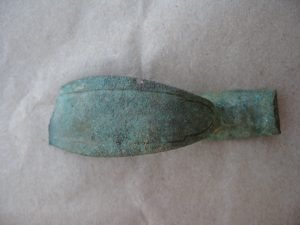
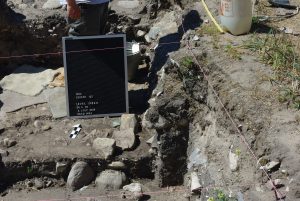 We also found more parts of the house itself. Numerous large worked stones and fragments of window glass were found along the west edge of the excavation. Their location indicates where the chimney was knocked down and suggests that it brought down a dormer with a window as it collapsed. We have found parts of two window shutter hinges just beyond this area in previous seasons. Remnants of posts were found at the edges of the deep area identified as a root cellar.
We also found more parts of the house itself. Numerous large worked stones and fragments of window glass were found along the west edge of the excavation. Their location indicates where the chimney was knocked down and suggests that it brought down a dormer with a window as it collapsed. We have found parts of two window shutter hinges just beyond this area in previous seasons. Remnants of posts were found at the edges of the deep area identified as a root cellar.
After spending the winter cleaning and cataloging all of this season’s finds, excavation will resume in early June 2017. 